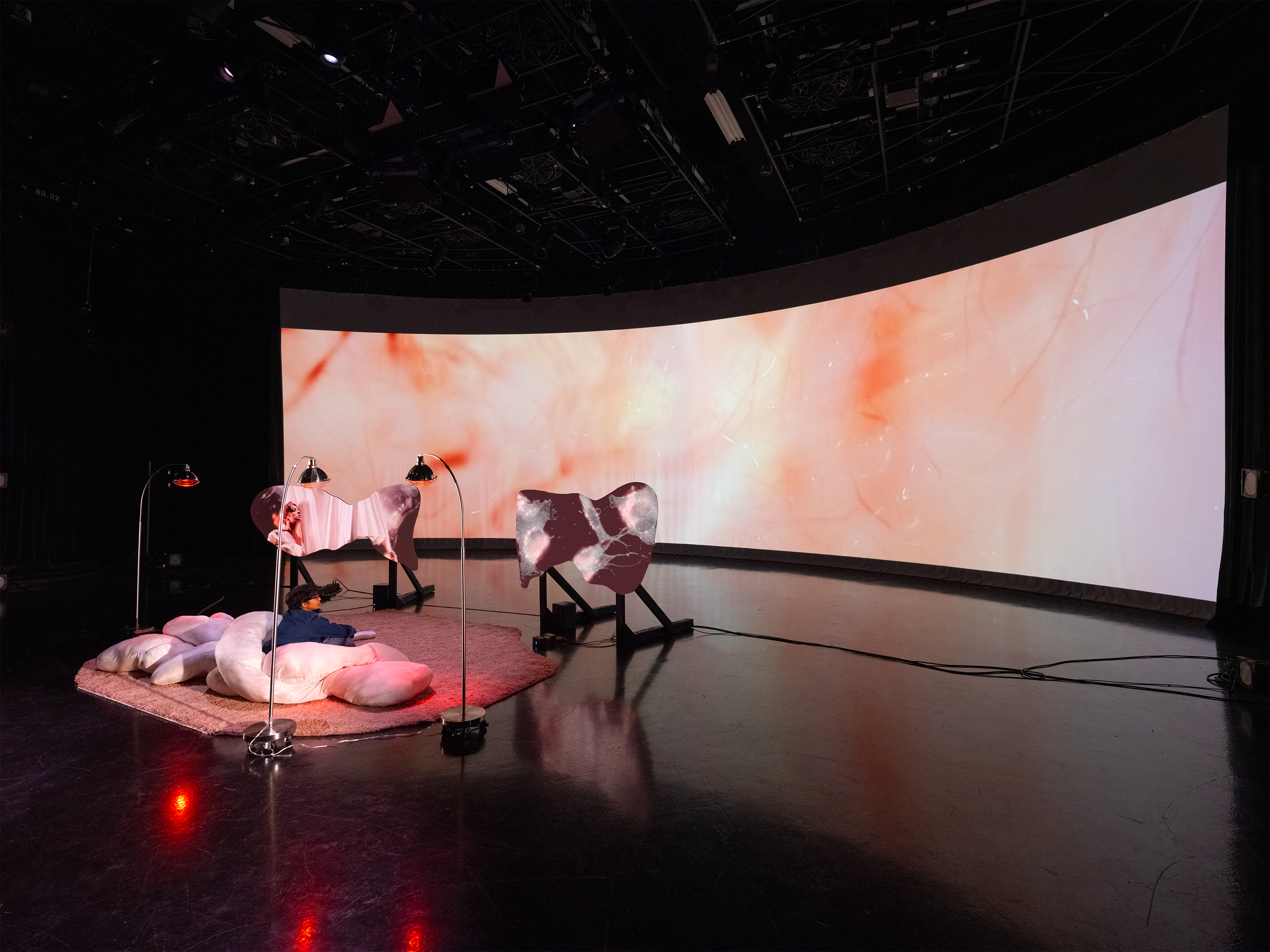
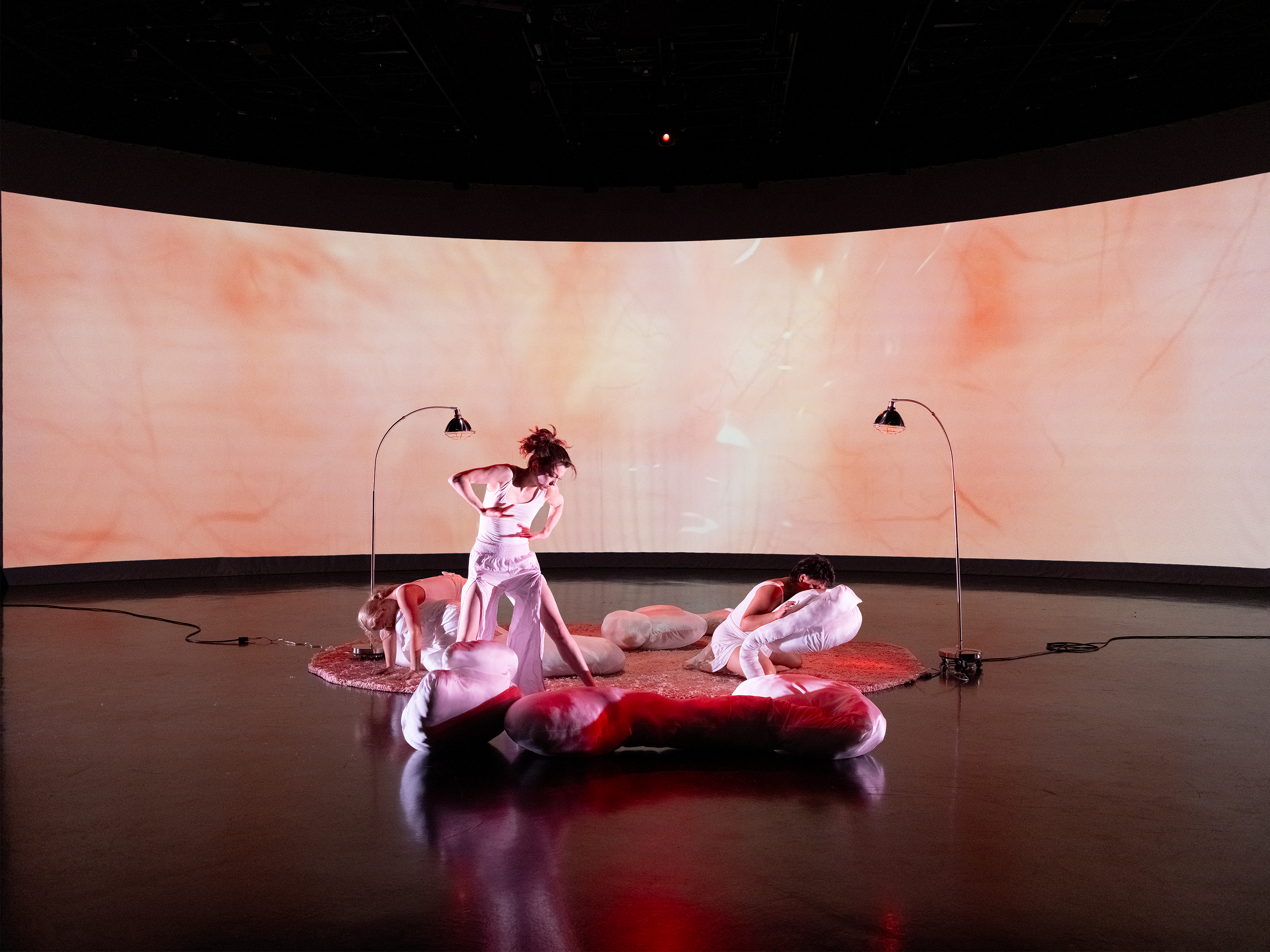
A multimedia exhibition and live performance
Chimeric Womb
Duderstadt Center (Ann Arbor, MI)Mar 8, 2025
Chimeric Womb is a one-day multimedia exhibition and live performance directed by Okyoung Noh. A collaboration between Okyoung Noh, Korean American fiber artist Kim DeBord, and Chinese choreographer Ginny Jiang, this immersive experience conjures a shared dreamscape of Asian+ femininity, fluid embodiment, and collective becoming.
Expanding on the bold imagination of Asian women from the previous work Chimera, the exhibition weaves together infrared lamps, images of breathing inner walls, and textures reminiscent of skin to create a space for collective rebirth—a womb—where the audience awaits hatching into new bodies.
전시: 한국계 미국인 섬유예술가 Kim DeBord와의 협업으로 제작되었다. 전작 <Chimera>에서 탐구한 아시아+ 여성들에 대한 상상을 확장하여, 따뜻한 적외선 램프, 숨 쉬는 내벽의 이미지, 피부의 촉감 같은 텍스쳐와 뒤엉켜 관객들이 새로운 몸으로 부화를 기다리는 장소-자궁을 만들었다.
퍼포먼스: 중국인 안무가 Ginny Jiang과의 협업으로 제작된 퍼포먼스이다. 전시 말미에 아시아와 태평양계 댄서 3인이 등장해 변신(transformation)의 단계에 놓인 몸을 퍼포밍한다. 무대와 관객을 가로지으며, 분열하는 몸, 엉킨 몸, 기댄 몸, 확장된 몸을 실험한다. 댄서와 빈백에 얽혀 관객은 온열과 붉은 빛으로 물들어간다—새로운 몸으로.
Expanding on the bold imagination of Asian women from the previous work Chimera, the exhibition weaves together infrared lamps, images of breathing inner walls, and textures reminiscent of skin to create a space for collective rebirth—a womb—where the audience awaits hatching into new bodies.
전시: 한국계 미국인 섬유예술가 Kim DeBord와의 협업으로 제작되었다. 전작 <Chimera>에서 탐구한 아시아+ 여성들에 대한 상상을 확장하여, 따뜻한 적외선 램프, 숨 쉬는 내벽의 이미지, 피부의 촉감 같은 텍스쳐와 뒤엉켜 관객들이 새로운 몸으로 부화를 기다리는 장소-자궁을 만들었다.
퍼포먼스: 중국인 안무가 Ginny Jiang과의 협업으로 제작된 퍼포먼스이다. 전시 말미에 아시아와 태평양계 댄서 3인이 등장해 변신(transformation)의 단계에 놓인 몸을 퍼포밍한다. 무대와 관객을 가로지으며, 분열하는 몸, 엉킨 몸, 기댄 몸, 확장된 몸을 실험한다. 댄서와 빈백에 얽혀 관객은 온열과 붉은 빛으로 물들어간다—새로운 몸으로.
Photo by Andy Kajie, Shiyang Li
Full video available upon request.
DIRECTOR: Okyoung Noh
PERFORMANCE DIRECTORS: Ginny Jiang, Okyoung Noh
CHOREOGRAPHER: Ginny Jiang
DANCERS: Mia Brooks, Hope Hanna, Bridghaite Lemrow-Collazo-Rosario
MUSIC: Chien-An Yuan
INSTALLATION: Okyoung Noh
FIBER ART: Kim DeBord
3D RENDERING: Seungah Li
EDITOR: Okyoung Noh
PRODUCER: Okyoung Noh
Sponsored by Arts Initiative
Filmed at The James and Anne Duderstadt Center
PERFORMANCE DIRECTORS: Ginny Jiang, Okyoung Noh
CHOREOGRAPHER: Ginny Jiang
DANCERS: Mia Brooks, Hope Hanna, Bridghaite Lemrow-Collazo-Rosario
MUSIC: Chien-An Yuan
INSTALLATION: Okyoung Noh
FIBER ART: Kim DeBord
3D RENDERING: Seungah Li
EDITOR: Okyoung Noh
PRODUCER: Okyoung Noh
Sponsored by Arts Initiative
Filmed at The James and Anne Duderstadt Center
Cross the Flow of Violence
흐르는 폭력을 건너기
Interactive performance, 30’ 00”, Apr 2025
“Dare to cross the flow of violence — with a broker as your guide.”
This 30-minute interactive performance for 15 audience members is led by the artist in the role of a “broker” — a figure who helps the perilous escape from North Korea to China for a price. Brokers play a significant role in guiding North Korean refugees across the Tumen River, a heavily monitored border where armed guards patrol day and night.
Inspired by the story of Mrs. Kim, a North Korean refugee who survived underwater while crossing the river, the artist leads the audience through the exhibition space as if navigating the swirling flow of American imperialist violence in the trans-Pacific. The space becomes a fragmented landscape of memories, witnesses, and echoes — demanding that participants move through it with uncertainty, urgency, and resolve.
As Mrs. Kim once said, “You either die or survive underwater.”
Together, we submerge into this flow, fumbling through the death, pain, and grit of those who came before us. Will we be able to connect to the flow and emerge on the other side of the land?
Inspired by the story of Mrs. Kim, a North Korean refugee who survived underwater while crossing the river, the artist leads the audience through the exhibition space as if navigating the swirling flow of American imperialist violence in the trans-Pacific. The space becomes a fragmented landscape of memories, witnesses, and echoes — demanding that participants move through it with uncertainty, urgency, and resolve.
As Mrs. Kim once said, “You either die or survive underwater.”
Together, we submerge into this flow, fumbling through the death, pain, and grit of those who came before us. Will we be able to connect to the flow and emerge on the other side of the land?

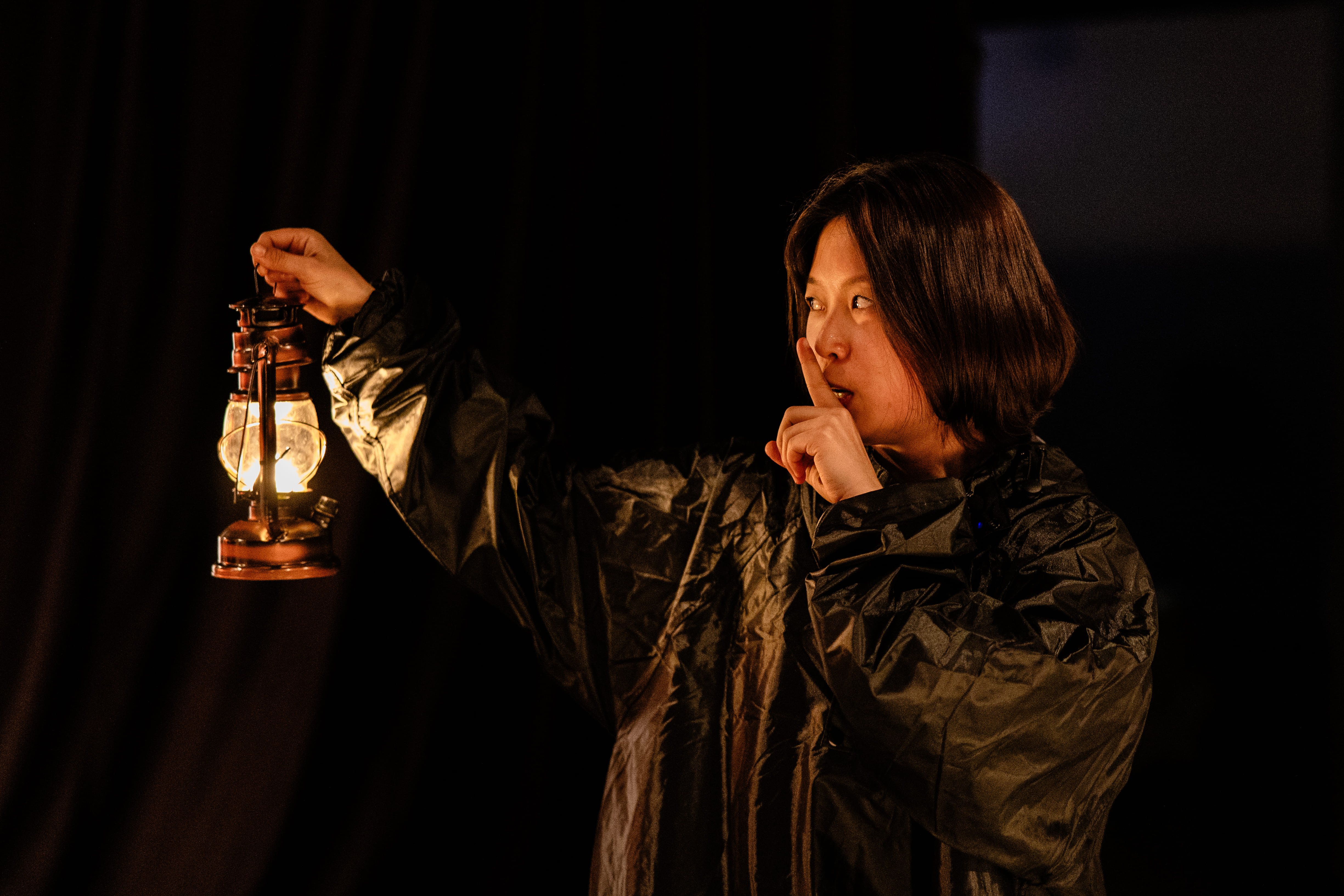



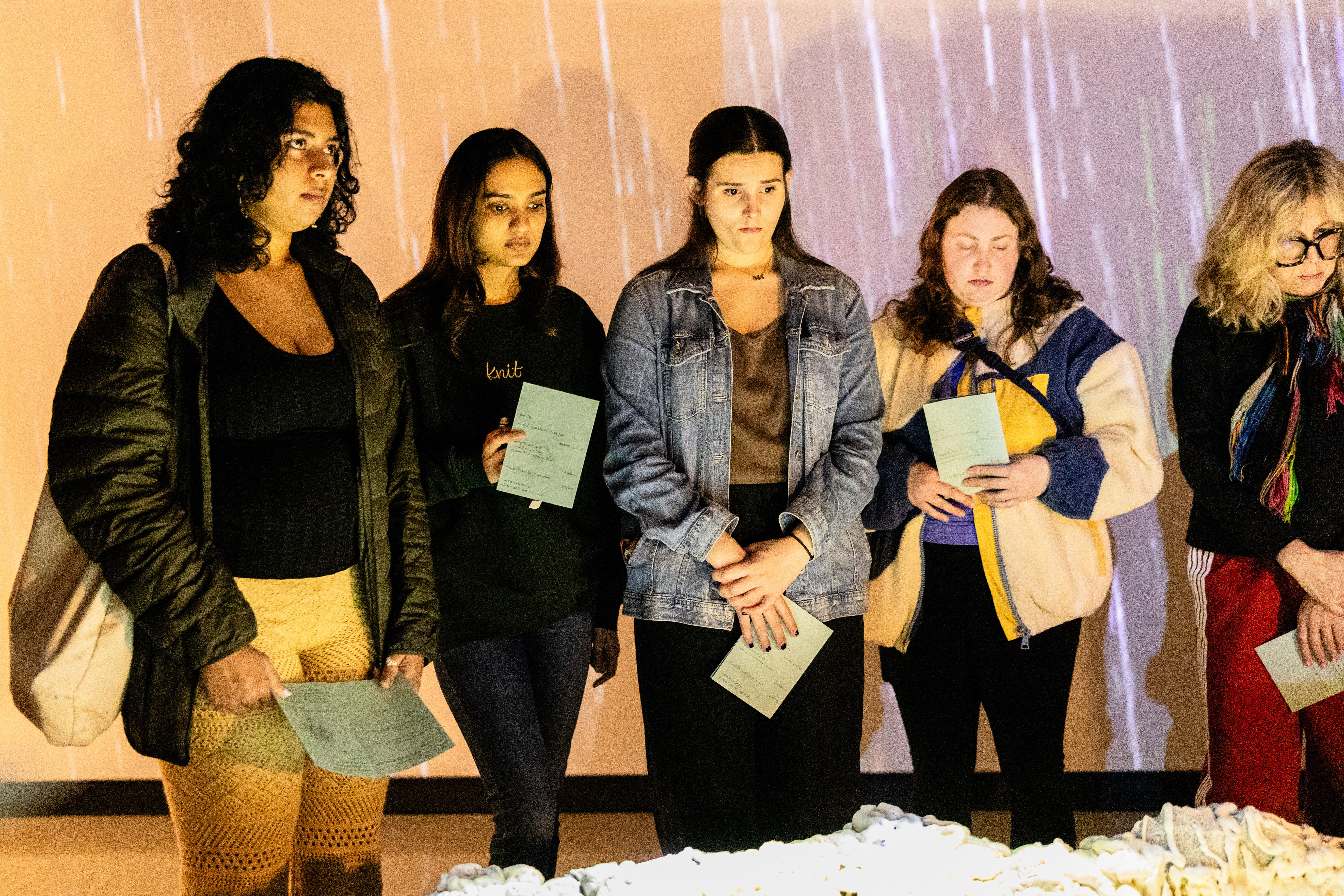



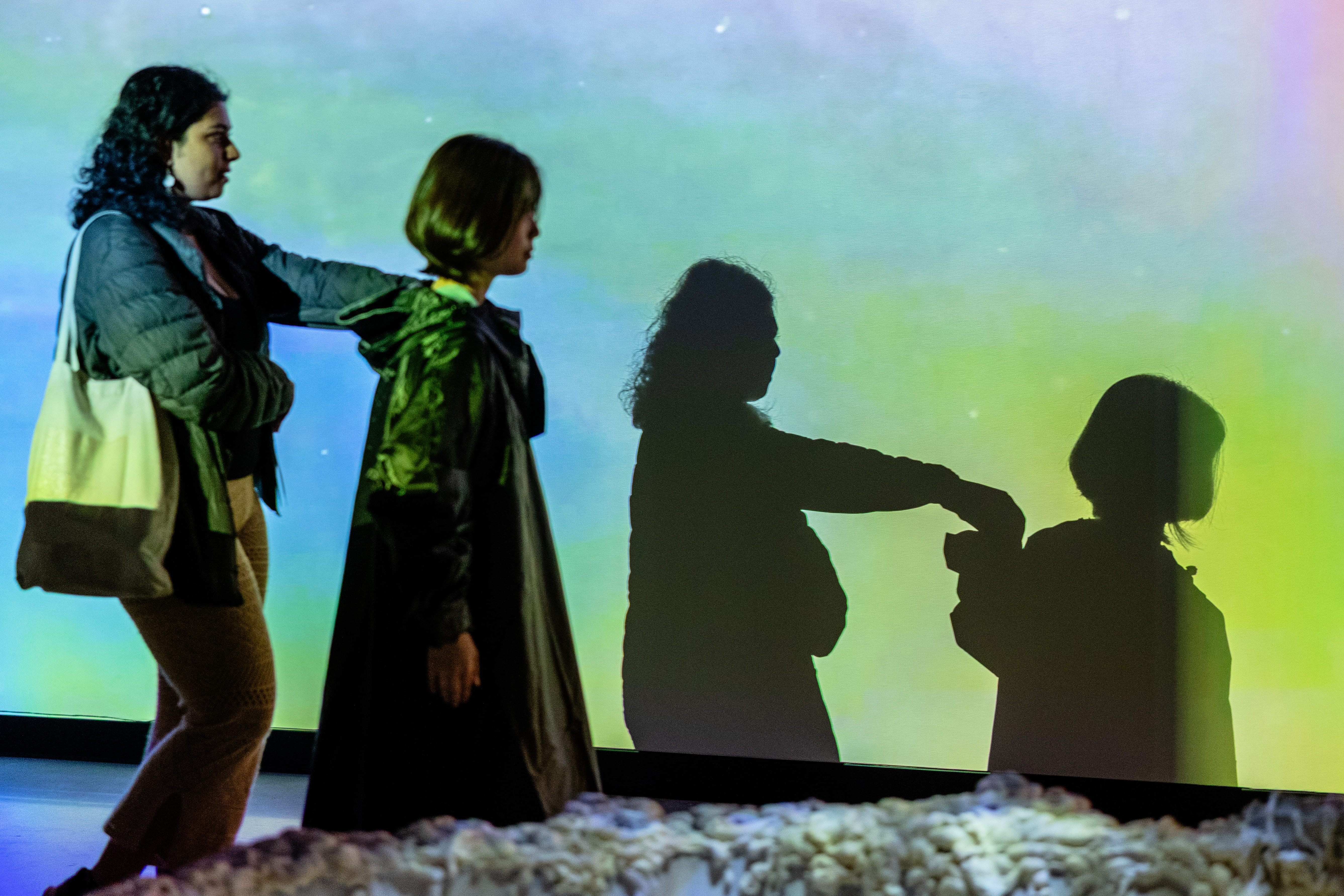



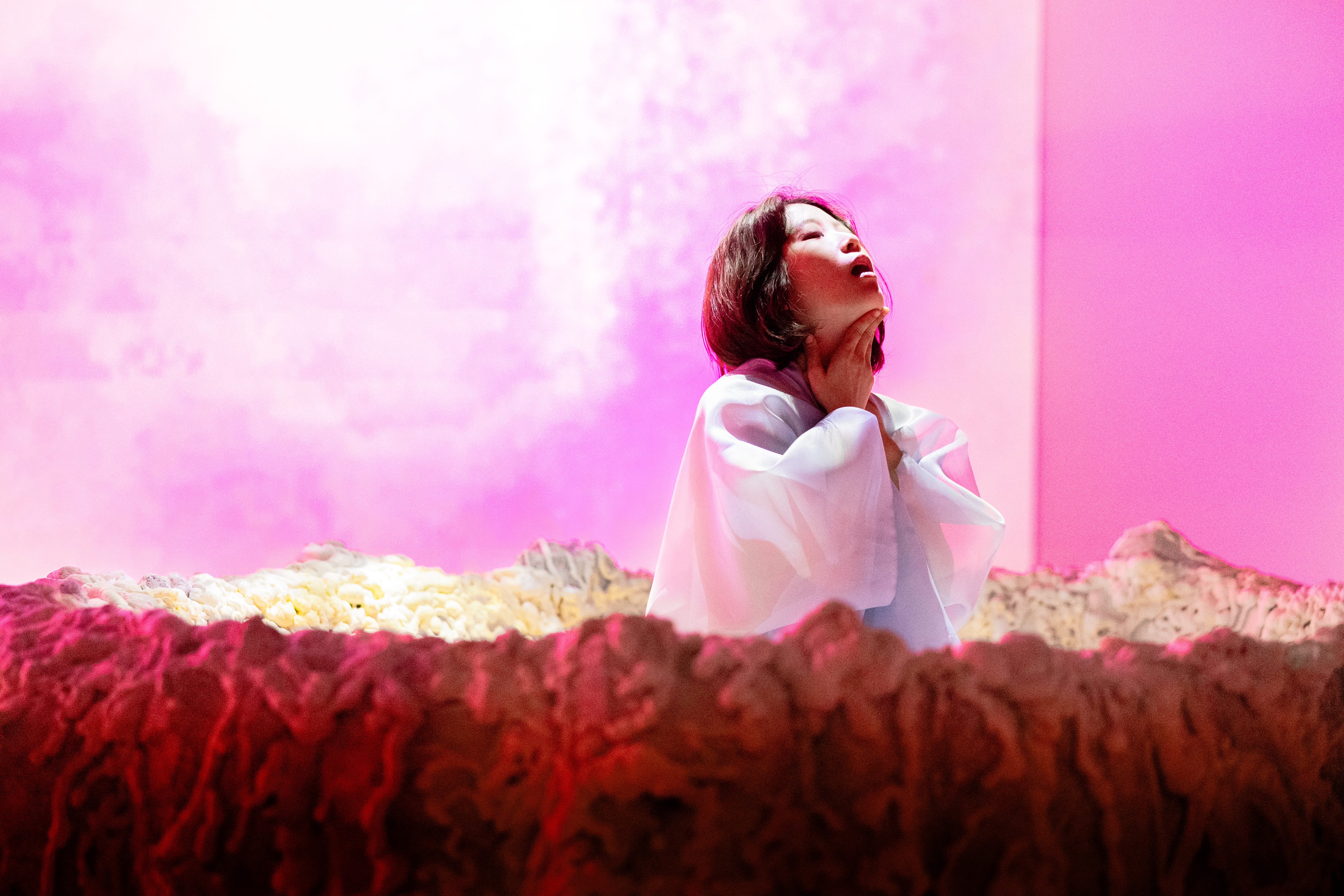

Photo by Sin Yu
Video by Andy Kajie
Artist talk moderated by Srimoyee Mitra


My Grandma’s Suseoks Whisper…
속삭이는 수석들
Ceramics, motion-sensor speaker, MDF, mixed sand and soil, dimensions variable, Feb 2025
The three sculptures reference Suseok (viewing stones) collected by my grandmother from the seashore where her uncle was executed and disappeared, as well as dead bodies—a drowned body, dry skins, and a bleeding mouth—during the Jeju 4.3 Massacre in mid-20th-century South Korea. Reimagined as vessels of memory that embody the residues of executed people, the sculptures carry recollections of U.S. imperialist violence. As the audience approaches, the sculptures transmit my grandmother’s spoken testimony—faint, yet vivid with fury. The English translation of her testimony is provided on a metal plate reminiscent of a memorial sign.
작가 외할머니의 수석(水石) 수집 행위를 역사적 트라우마와 상실에 대처하고 회복하는 수행으로 바라보고, 수석들과, 학살 희생자들의 몸 (갈라진 피부, 물에 빠진 몸, 피 흘리는 입)을 시각적 레퍼런스 삼아 총 3개가 제작되었다. 관객이 다가가면, 제주 4.3을 증언하는 구술 오디오가 흘러나온다.
작가 외할머니의 수석(水石) 수집 행위를 역사적 트라우마와 상실에 대처하고 회복하는 수행으로 바라보고, 수석들과, 학살 희생자들의 몸 (갈라진 피부, 물에 빠진 몸, 피 흘리는 입)을 시각적 레퍼런스 삼아 총 3개가 제작되었다. 관객이 다가가면, 제주 4.3을 증언하는 구술 오디오가 흘러나온다.



My Grandma’s Suseoks Whisper… He Drifted Away (2025)
“They lined people up by the seashore. My uncle was also executed there. People drifted away, never to be found.”


My Grandma’s Suseoks Whisper… They Killed All (2025)
“No matter what, they shot and killed all. No reason, no guilt, just shot everyone. They killed all, calling us commie spies.”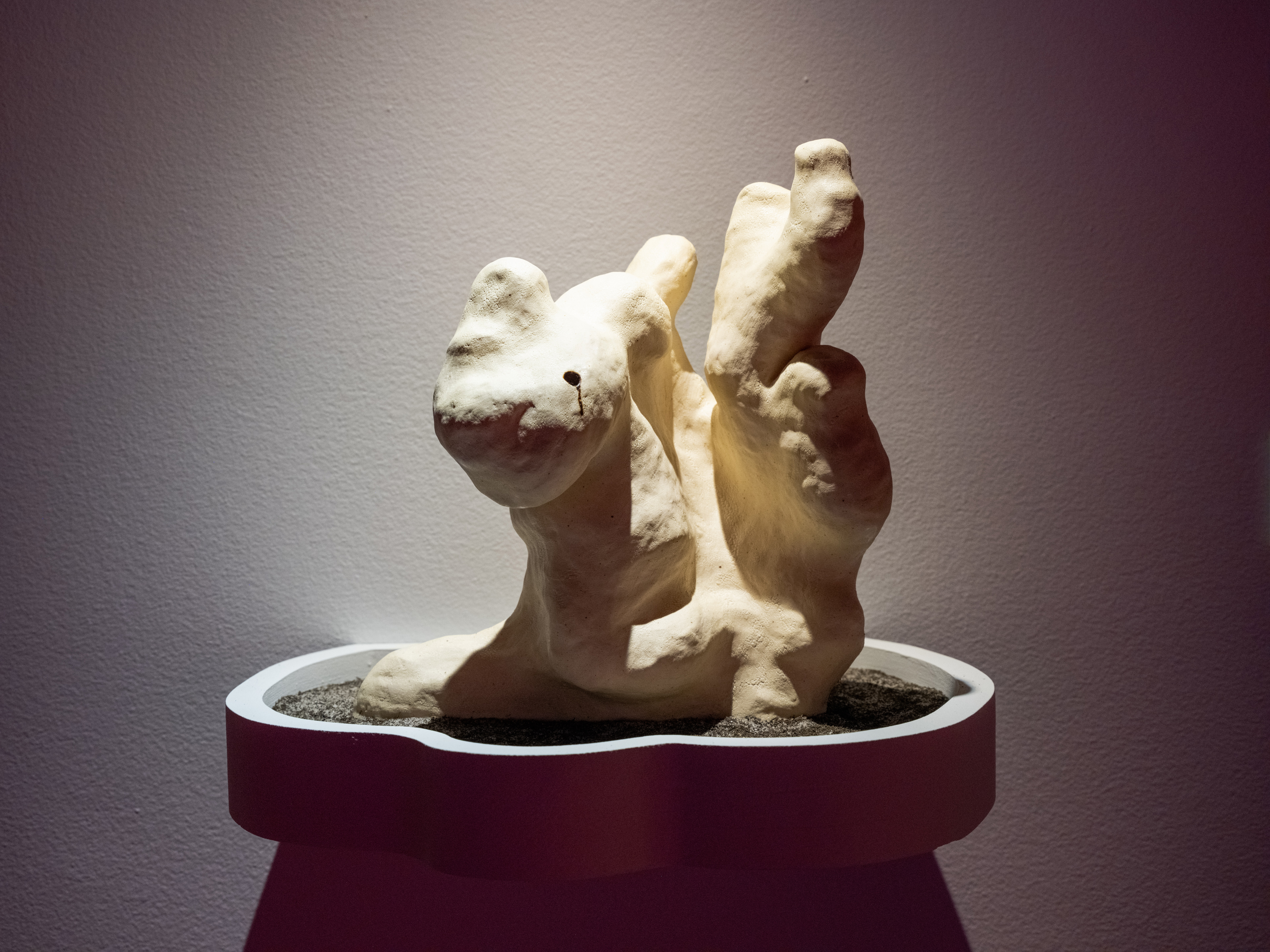
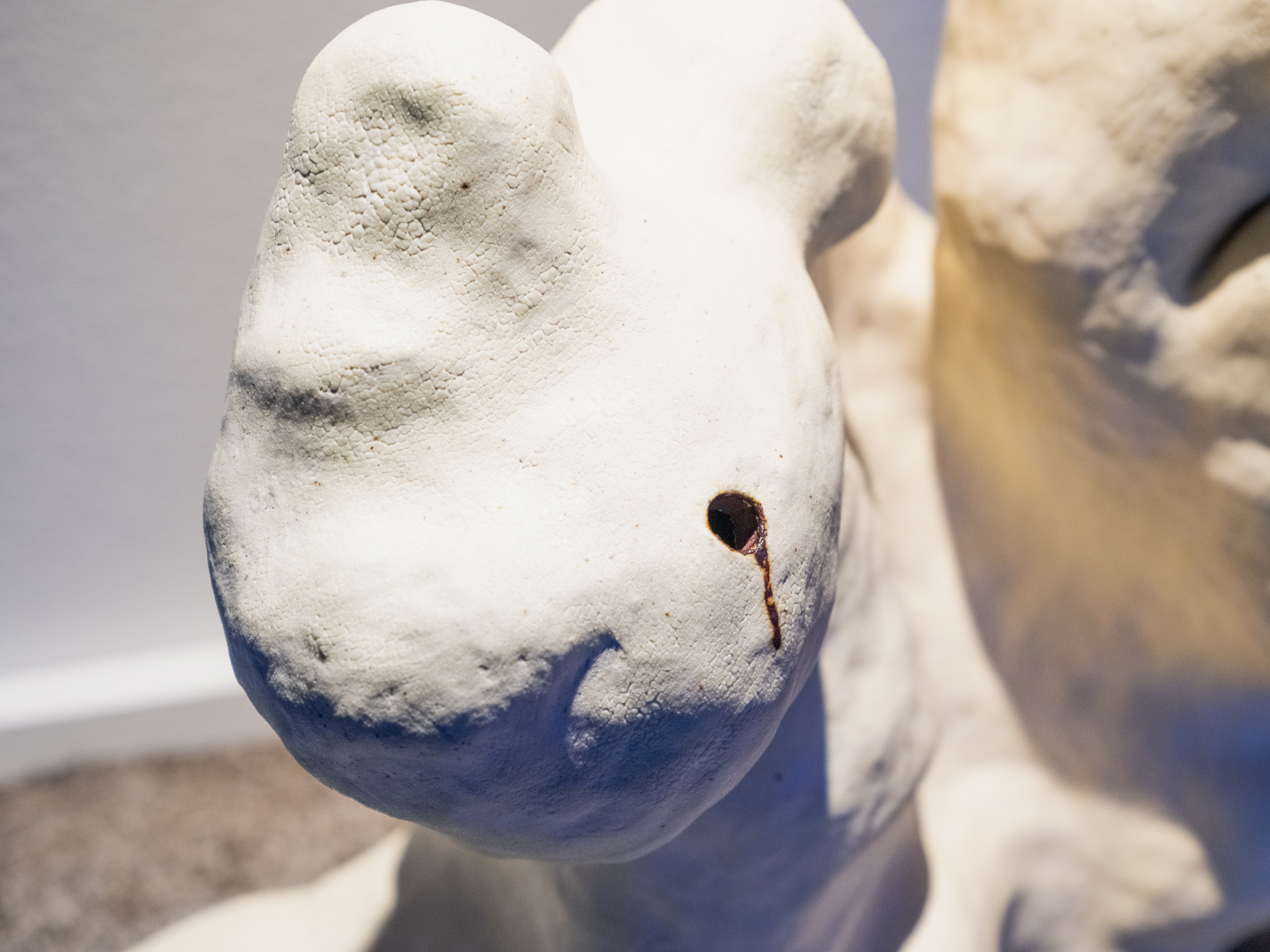
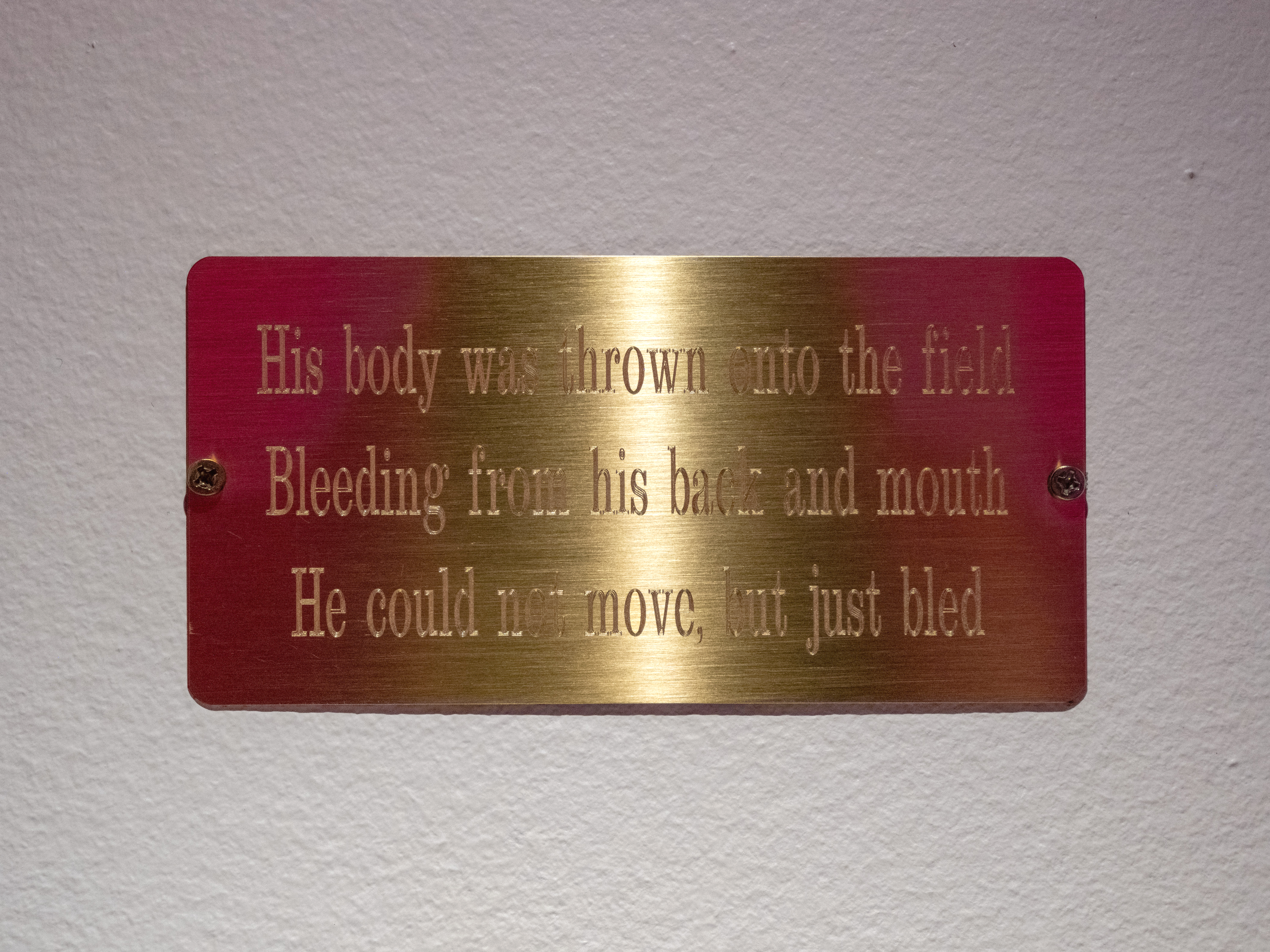
My Grandma’s Suseoks Whisper... His Mouth Bled (2025)
“His body was thrown onto the field. Bleeding from his back and mouth. He could not move, but just bled.”Photo by Andy Kajie
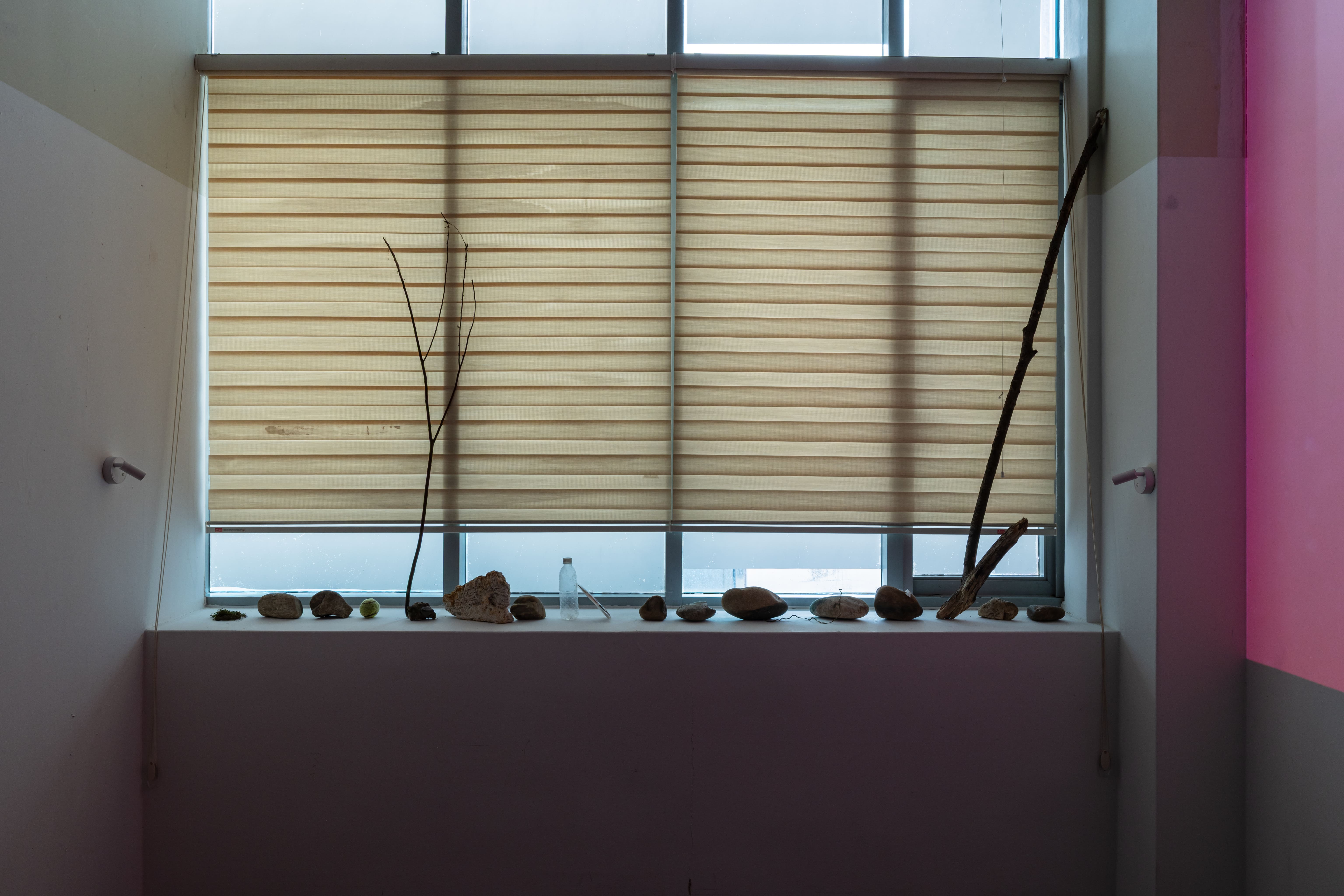
흘러온 그녀의 몸을 데려오기
Carrying Her Body from the Water to My Window
2-channel video, temporary installation of collected stones, trash, and branches. Dimensions variable (video: 26 minutes). May 2025
위 영상 및 설치 작업은 언젠가 한강에서 투신 기도를 했다는 친할머니를 다루었다. 작업은 물 속으로 침잠했던 그 오래전의 몸이 시공간을 건너 흘러와, 이곳 어딘가에 남아 있을지도 모른다는 상상에서 시작하였다. 2025년 5월, 난지 레지던시 인근 한강변을 따라 그녀의 신체 일부를 연상케하는 흘러온 돌, 찌꺼기, 나뭇조각 등 20여 개의 파편들을 주워 나의 작업 공간으로 데려왔다. 창가는 머리부터 발끝까지, 그 몸을 잠시 조우하고, 그녀에 대한 기억을 더듬는 자리로 기능했다. 3일간의 오픈 스튜디오 이후, 이들은 다시 적당한 곳으로 돌려 보내졌다—다시 흘러 간다.
This video and temporary installation is about my paternal grandmother, who once attempted to end her life in the Han River. I imagined that parts of her submerged body might have drifted through time and space, reaching somewhere I live in. Along the riverbanks near the residency, I collected over twenty pieces of stone, debris, and driftwood, and brought them into my studio. The windowsill became a site to meet her body and to retrace my memories of her. After a three-day open studio, these fragments were returned to where they came from — and they flow on.
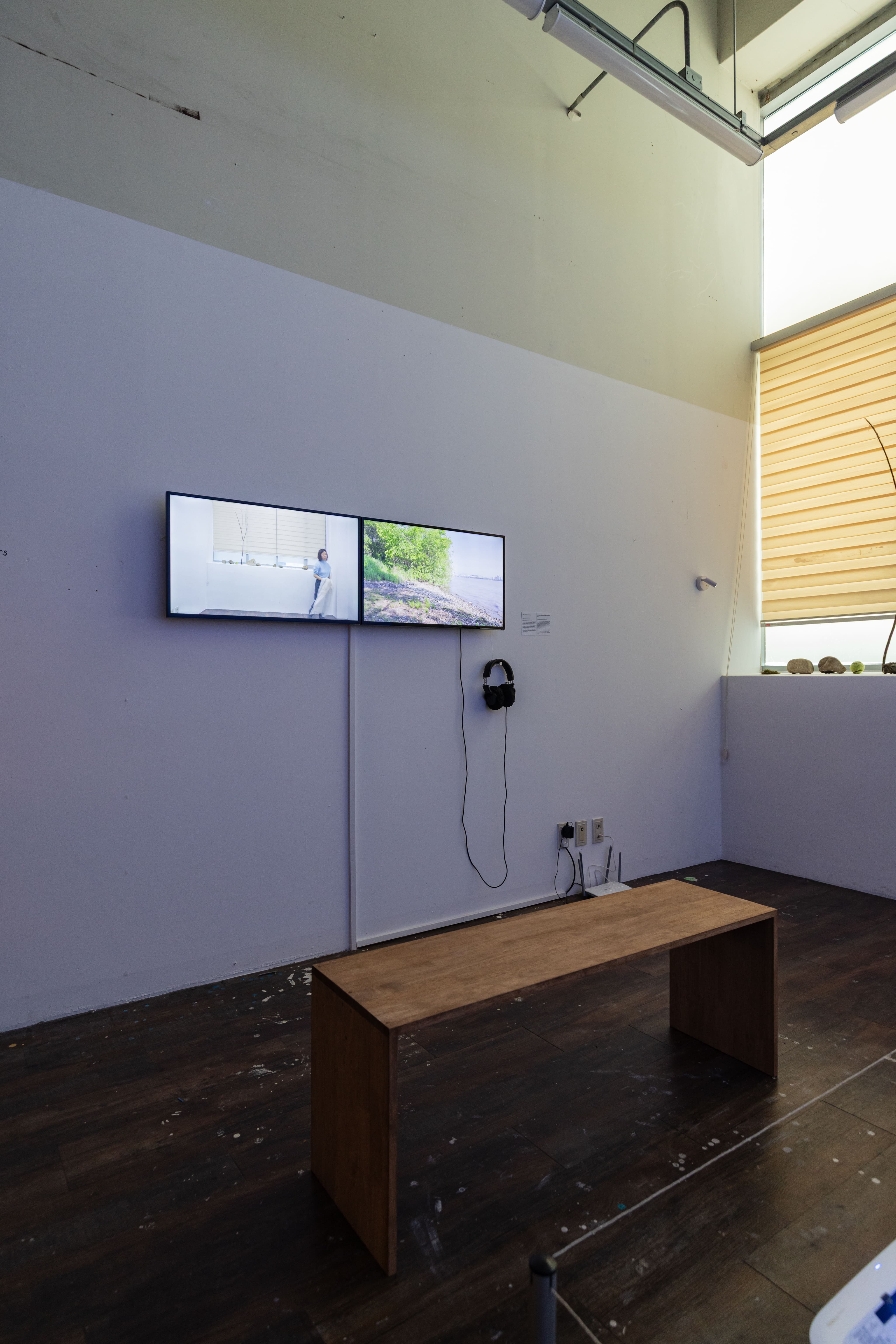
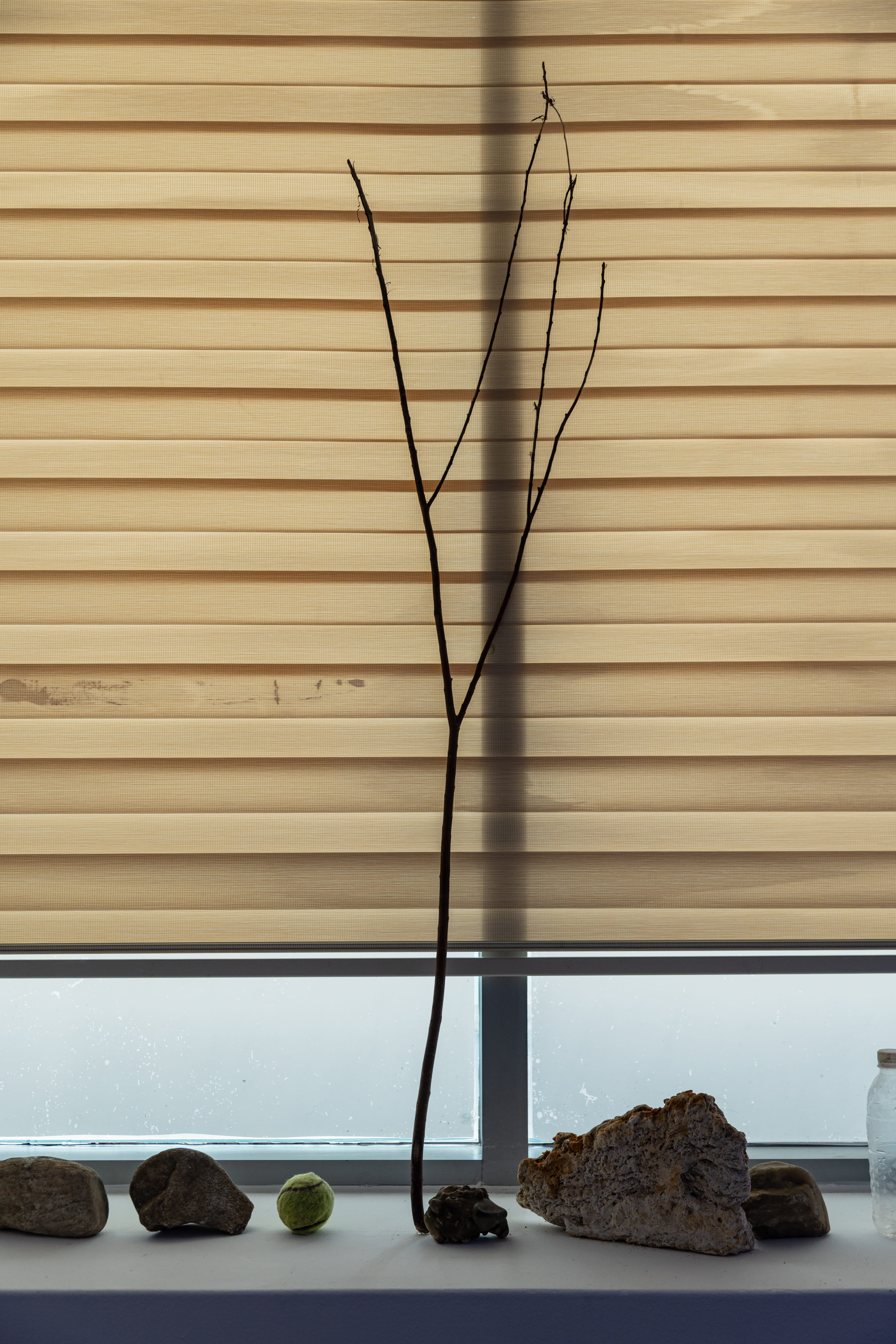
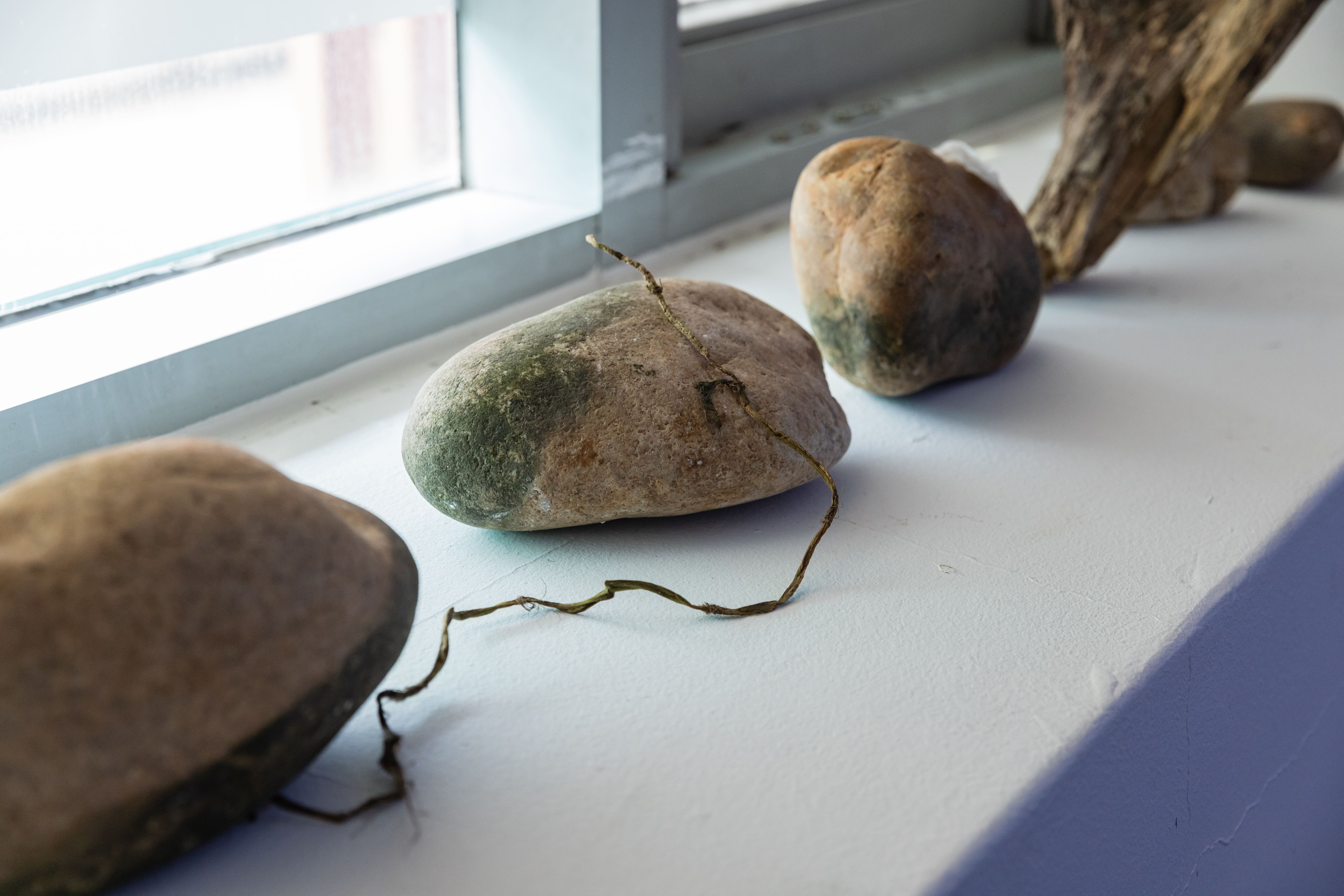
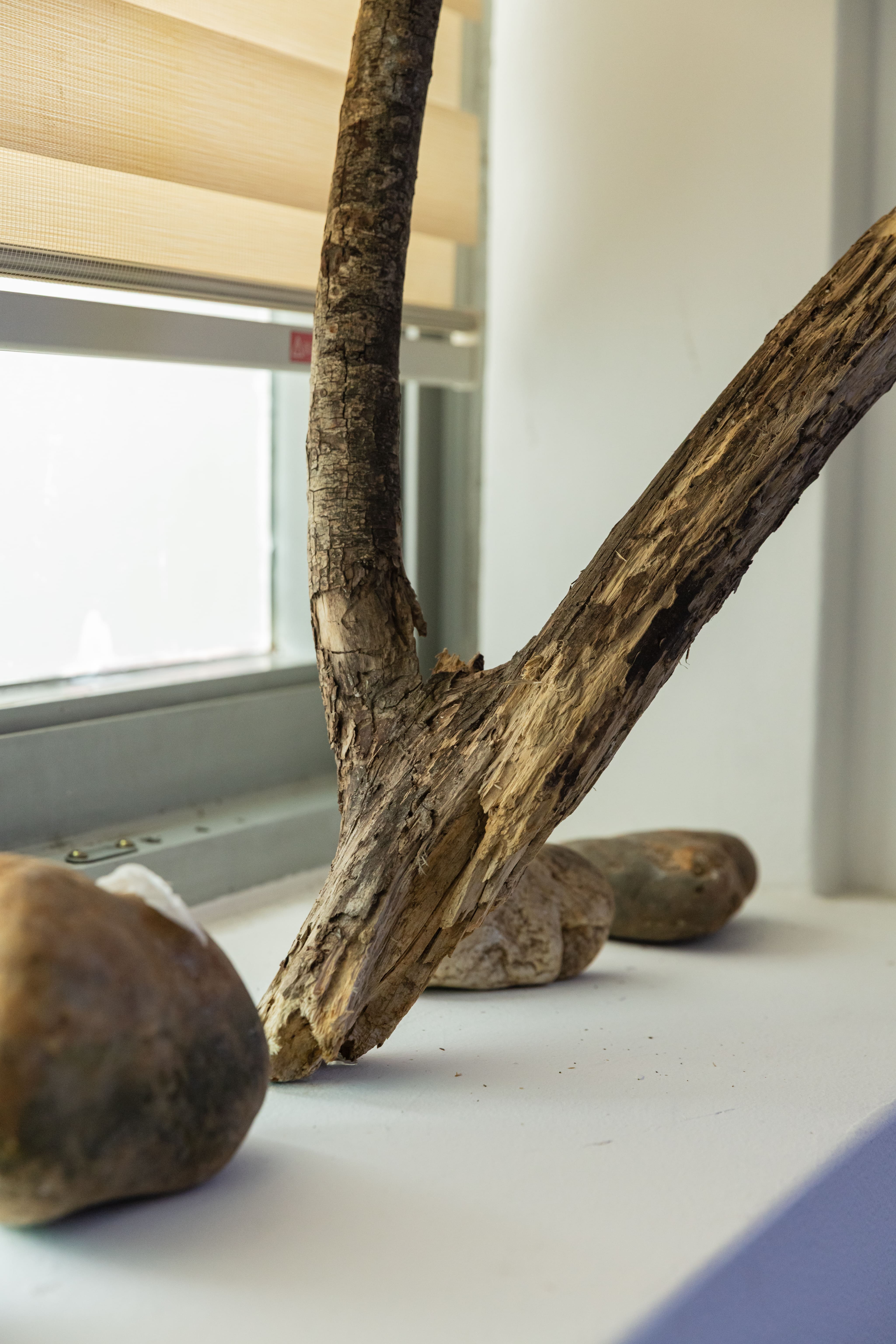
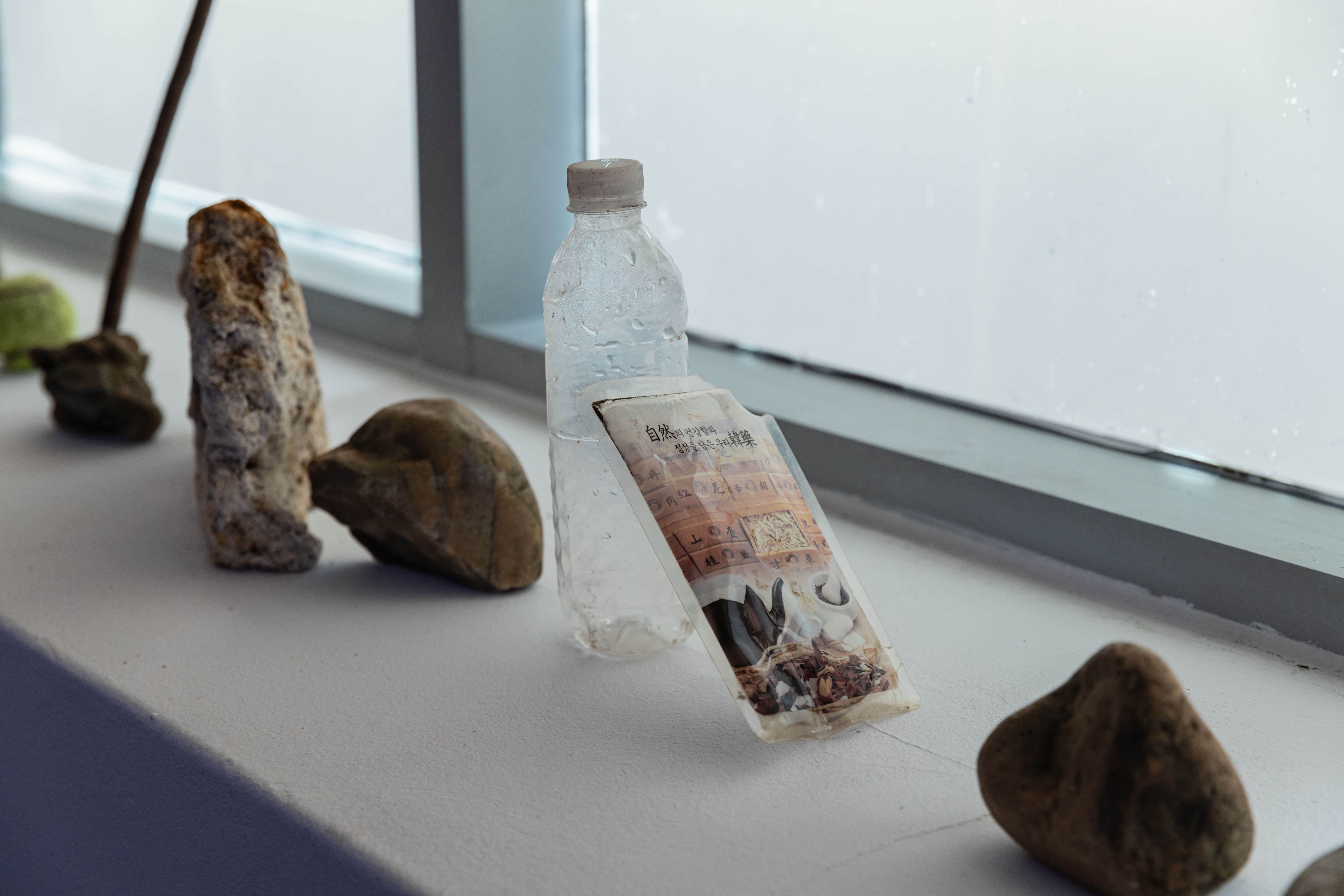
작품 사진 촬영: 서스테인 웍스
Photo by Sustain Works

Qual Qual
콸콸
Lava stone, urethane foam, Styrofoam, spray paint, replica bullet, water pump, water infused with smoke and blood scent, and sand, Mar 2025
The fountain visually references the Hallasan volcano, which formed Jeju Island, and Jeju massacre survivors' fortresses. Pumping water, scented with blood and gunfire, hints at the persistence of violence, surging into our spaces.
제주 한라산의 ‘폭발’하는 백록담과 제주 4.3 사건 이후 생존자들이 마을을 둘러 쌓았다는 돌담의 이미지를 시각적 레퍼런스로 삼아 제작한 분수 조각이다. 관객으로 하여금 전시 공간으로 끊임없이 솟아나 흐르는 폭력의 잔해를 상상케 한다.
Photo by Andy Kajie